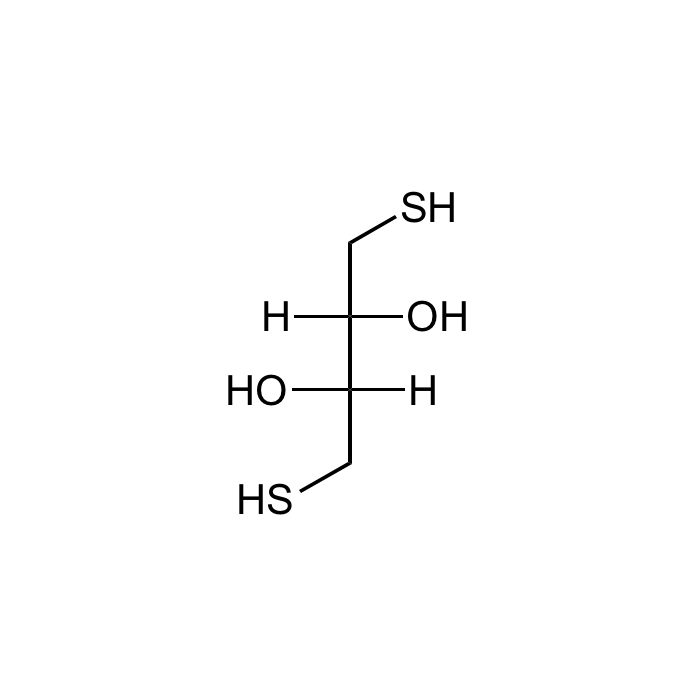Cookie Policy: This site uses cookies to improve your experience. You can find out more about our use of cookies in our Privacy Policy. By continuing to browse this site you agree to our use of cookies.
Chemodex
DL-Dithiothreitol

| Product Details | |
|---|---|
| Synonyms | threo-1,4-Dimercapto-2,3-butanediol; Cleland‘s reagent; DTT |
| Product Type | Chemical |
| Properties | |
| Formula |
C4H10O2S |
| MW | 154.25 |
| CAS | 3483-12-3 |
| RTECS | EK1610000 |
| Source/Host Chemicals | Synthetic. |
| Purity Chemicals | ≥98 (AT) |
| Appearance | White powder. |
| Solubility | Soluble in water (50mg/ml). |
| Identity | Determined by 1H-NMR. |
| Declaration | Manufactured by Chemodex. |
| Other Product Data |
Click here for Original Manufacturer Product Datasheet |
| InChi Key | VHJLVAABSRFDPM-IMJSIDKUSA-N |
| Smiles | [H][C@@](O)([C@](O)([H])CS)CS |
| Shipping and Handling | |
| Shipping | AMBIENT |
| Short Term Storage | +4°C |
| Long Term Storage | +4°C |
| Handling Advice | Protect from light and moisture. |
| Use/Stability | Stable for at least 2 years after receipt when stored at +4°C. |
| Documents | |
| MSDS |
 Download PDF Download PDF |
| Product Specification Sheet | |
| Datasheet |
 Download PDF Download PDF |
DTT is a reducing agent, which once oxidized forms a stable six-membered ring with an internal disulfide bond. It is an excellent reagent for maintaining SH groups in reduced state. DTT is used as a protecting agent that prevents oxidation of thiol groups, and used as a reducing agent for thiolated DNA. DTT is frequently used to reduce the disulfide bonds of proteins and, more generally, to prevent intramolecular and intermolecular disulfide bonds from forming between cysteine residues of proteins. DTT is often used along with sodium dodecylsulfate in SDS-PAGE to further denature proteins by reducing their disulfide bonds to allow for better separation of proteins during electrophoresis. DTT can also be used as an oxidizing agent. Its principal advantage is that effectively no mixed-disulfide species are populated, in contrast to other agents such as glutathione.
(1) W.W. Cleland; Biochemistry 3, 480 (1964) | (2) U.T. Ruegg & J. Rudinger; Methods Enzymol. 47, 111 (1977) | (3) D.W. Sears, et al; Biochemistry 16, 2031 (1977) | (4) M.C. Alliegro; Anal. Biochem. 282, 102 (2000) | (5) A.C. Grabski & R.R. Burgess; inNovations 13, 10 (2001)





